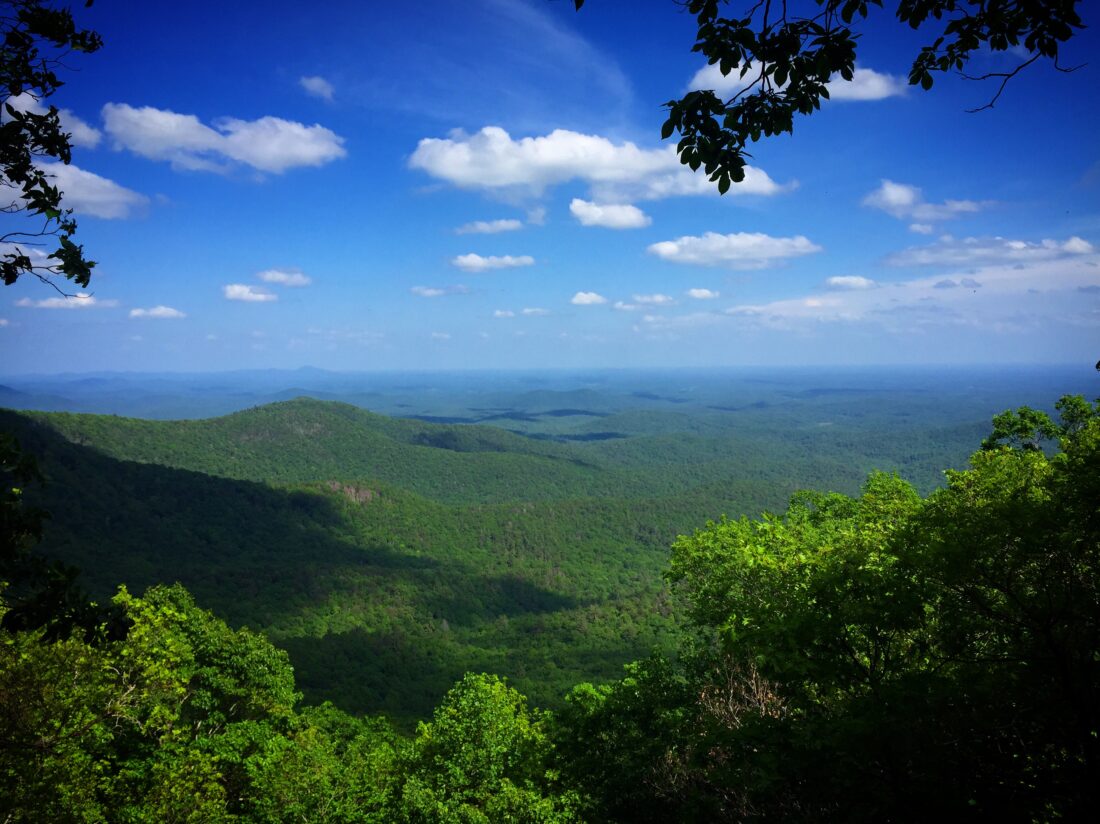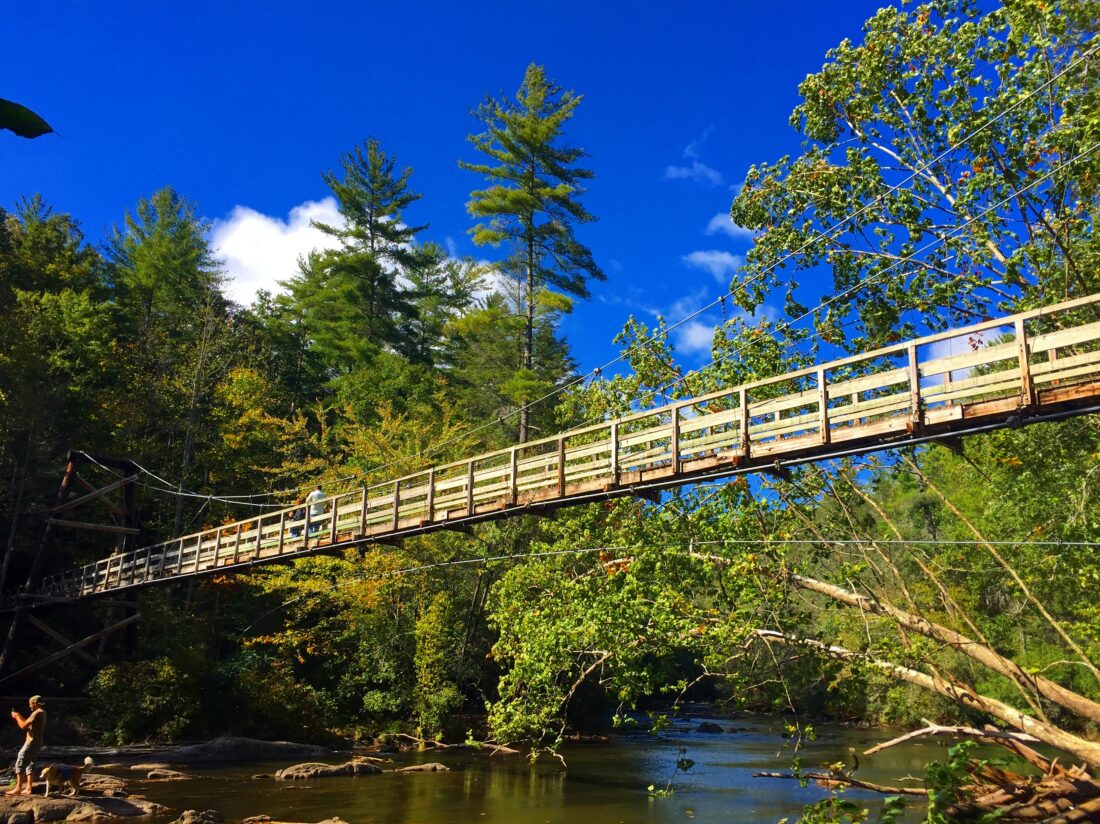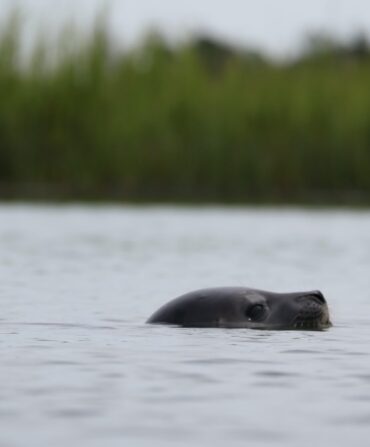At just short of three hundred miles, the Benton MacKaye Trail shares a starting point on Georgia’s Springer Mountain with its world-famous, much longer sister route, the Appalachian Trail. From there, the BMT bends into Tennessee and wiggles along a sky-high ridge on the North Carolina border deep into Great Smoky Mountains National Park, constituting the longest trail in the Smokies. In between is a rich tapestry of flora and terrain that defines the Southern hiking experience, from rhododendron groves, gorgeous waterfalls, and innumerable babbling streams to a peak of nearly six thousand feet (Mount Sterling) and some of the most abundant wildflower explosions of any temperate forest on the planet. In short, an outdoorsperson’s Appalachian dream.

One thing the BMT lacks: an adequate number of visitors. Human patronage, after all, helps keep a trail in shape and top-of-mind among conservationists. But a dedicated volunteer organization with more than six hundred members nationwide is on a quest to get it on the map.

Quick history: The BMT is named for Benton MacKaye (pronounced “muh kai”), the visionary forester who conceptualized the 2,190-mile AT in the 1920s. In fact, it’s the southernmost leg MacKaye originally intended the AT to take. Fast-forward to the 1970s when David Sherman, an AT through-hike veteran and Georgia Department of Natural Resources employee, began laying out MacKaye’s old route in the woods. Sherman knew it would be a physically challenging trail in serene, low-population areas, designed for true nature lovers. The Benton MacKaye Trail Association was incorporated as a 501(c)(3) organization in 1980, when volunteers’ shovels started meeting dirt to build it. After snaking the path across 292 miles, seven official wilderness areas, and three national forests, the association declared the long-distance BMT finished in 2005.
“We are definitely remote—you’re not going to find a shelter on our trail, just primitive campsites,” says Barry Allen, BMTA’s immediate past president and current board member. “It’s not like the AT where people have made a practice of spending the weekends partying at shelters.”
Last year alone, BMTA counted north of eight thousand volunteer maintenance hours on the trail, as people lugged chainsaws, axes, and crosscut saws into the wilderness. Still, some sections need more foot traffic to keep the trail clear of branches and its weeds tamped down.
To mark BMTA’s fortieth anniversary in 2020, some O.G. members were contemplating ways to gain more recognition, and the effort to achieve National Scenic Trail status was born. That designation is rarefied air, however, as only eleven trails currently hold it. And no trails in the South have achieved the designation since 1983, when the Natchez Trace Trail and Florida Trail were christened. Becoming a certified National Scenic Trail, Allen says, would immediately put the BMT on radars—and bucket lists—of hikers across the country and likely beyond.
BMTA formed a special committee in 2021, and they succeeded in getting a bill before Congress last year, seeking to amend the National Trails System Act and include the BMT on the scenic-trails shortlist. But that measure failed, as it was late to the table and became hung up in committee proceedings—which is typical of new bills, especially in a divisive Congress, Allen says.
Undeterred, trail supporters introduced a new bill this year (House Resolution 3683) with bipartisan support—sponsors and cosponsors include four Democrats and three Republicans, representing all three states the BMT crosses—which remained in the House Natural Resources Subcommittee on Federal Lands as of mid-June. Allen and company hope the resolution can make it through the House later this year, and that a Senate version of the bill will be introduced by the fall. In a perfect world, Allen says, the two houses would be working to reconcile and pass the National Scenic Trail measure in early 2024.
Several factors could work in the BMT’s favor, as Allen sees it: the trail’s quintessentially Southern natural beauty, indicative of place; its relative obscurity (the AT tallies more than a thousand through-hikers per year, its shorter sibling less than one hundred, if not closer to thirty); and the fact that BMT isn’t seeking federal funding for construction and land acquisition, like most National Scenic Trail applicants, because, well, it’s been finished for nearly twenty years.
“It’d be nice to have the [federal] protections, but we’re not looking for money,” Allen says. “More than anything the trail deserves the appreciation of the work that’s gone into it, the effort, and the beauty of the trail. There’s so many nice features. Until you’ve hiked more than a piece of it, you just don’t know.”








